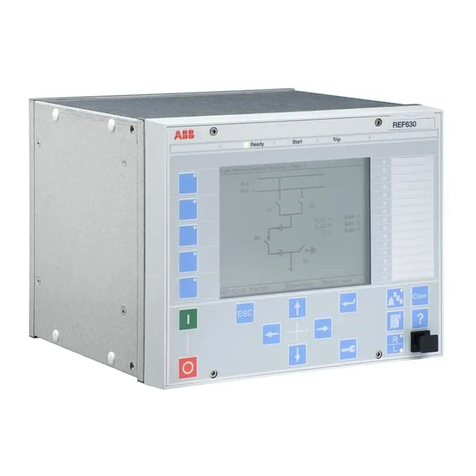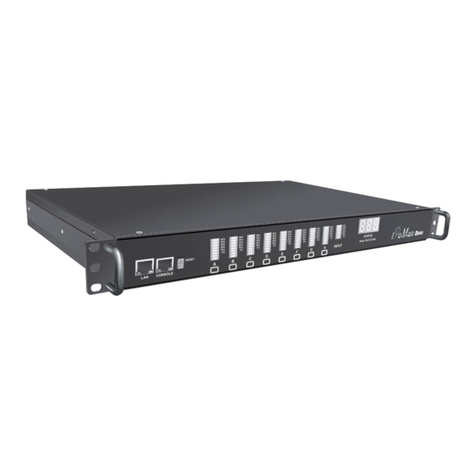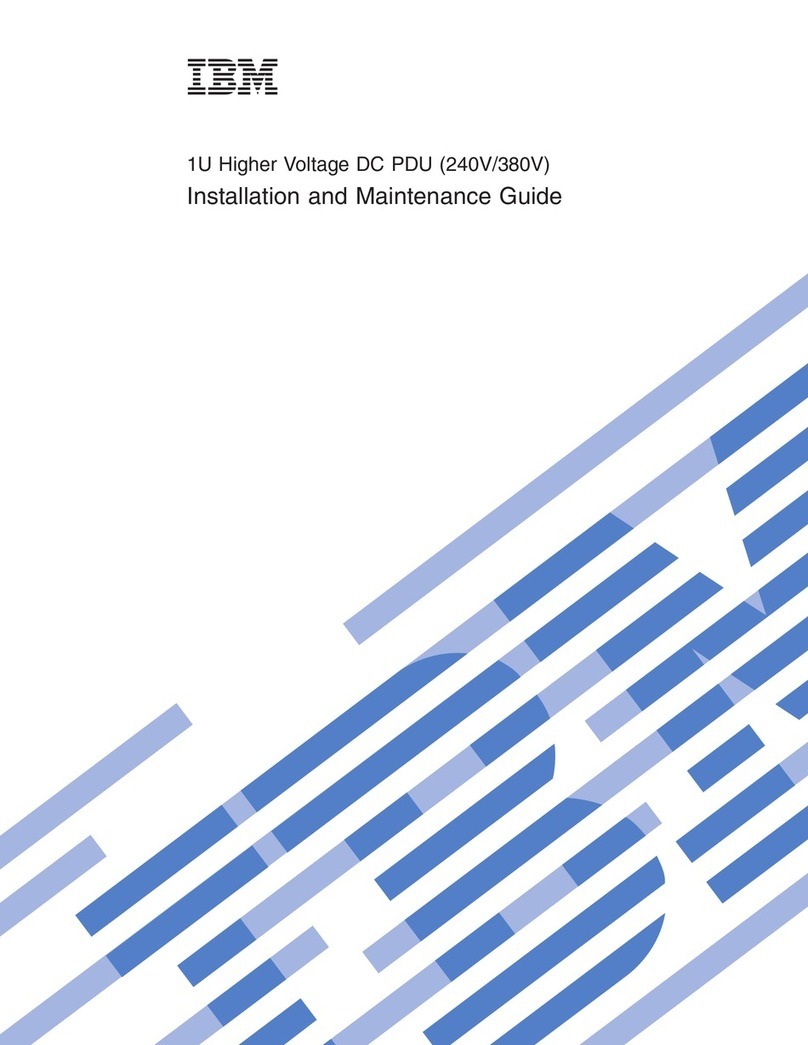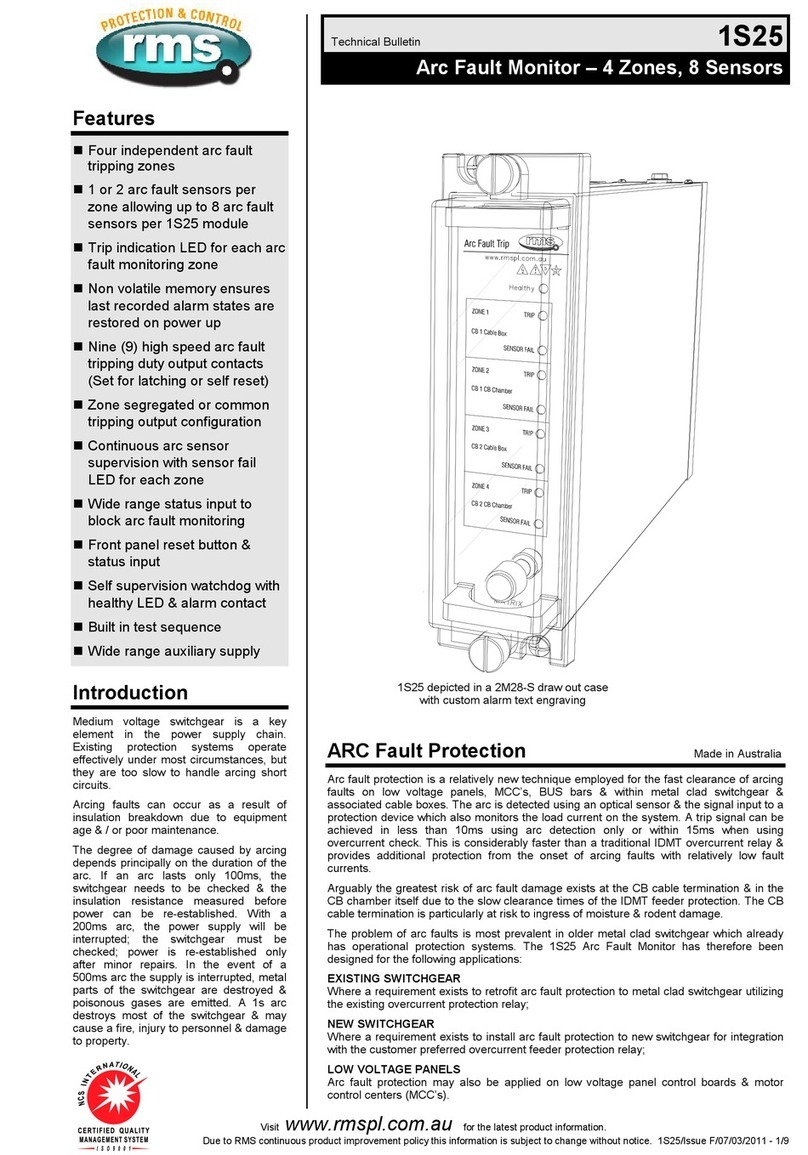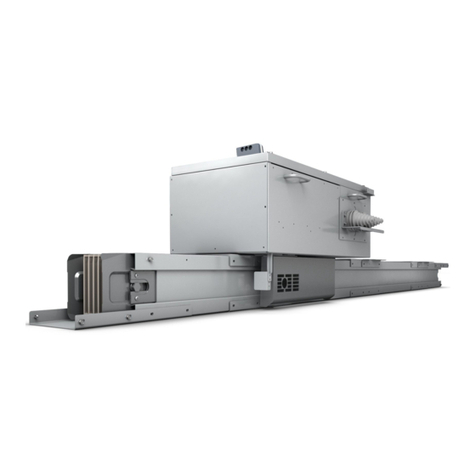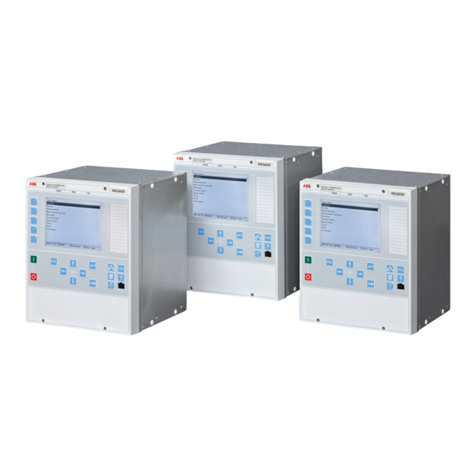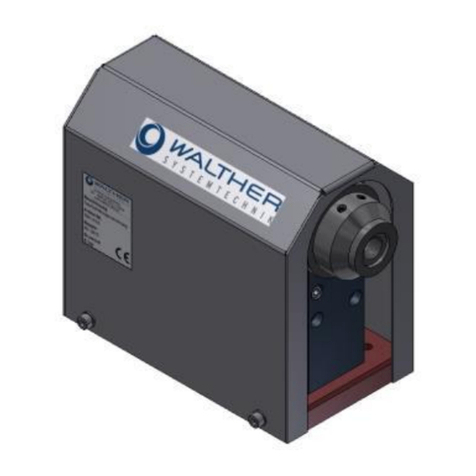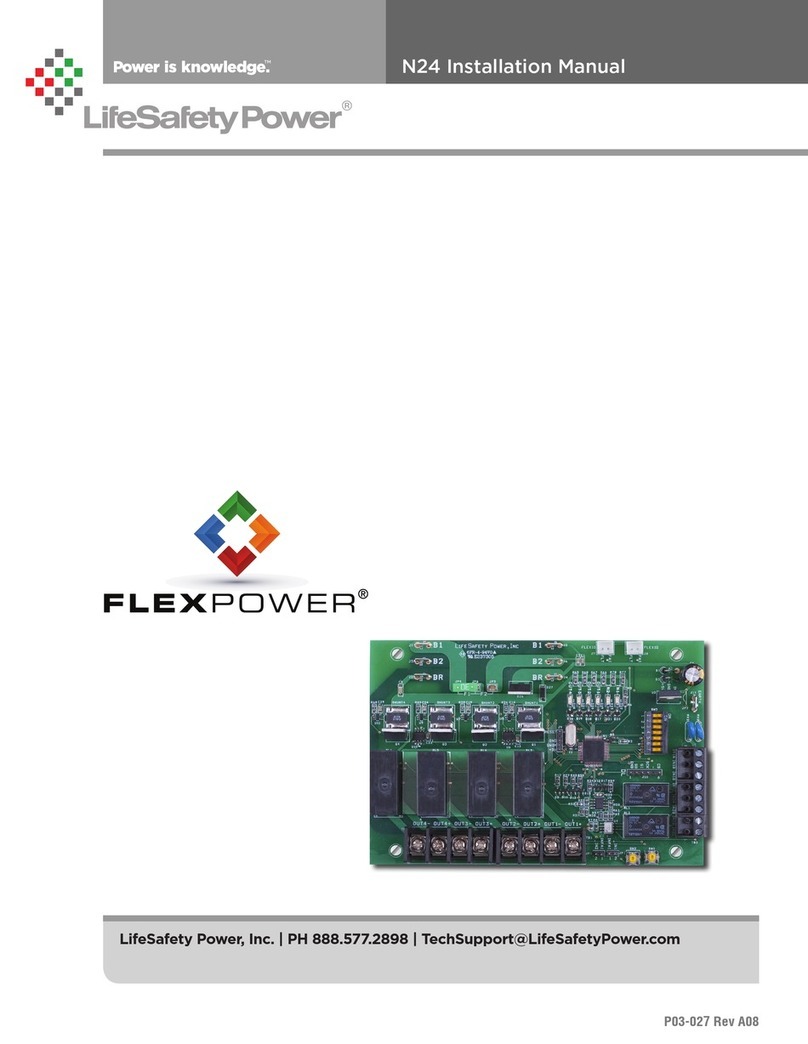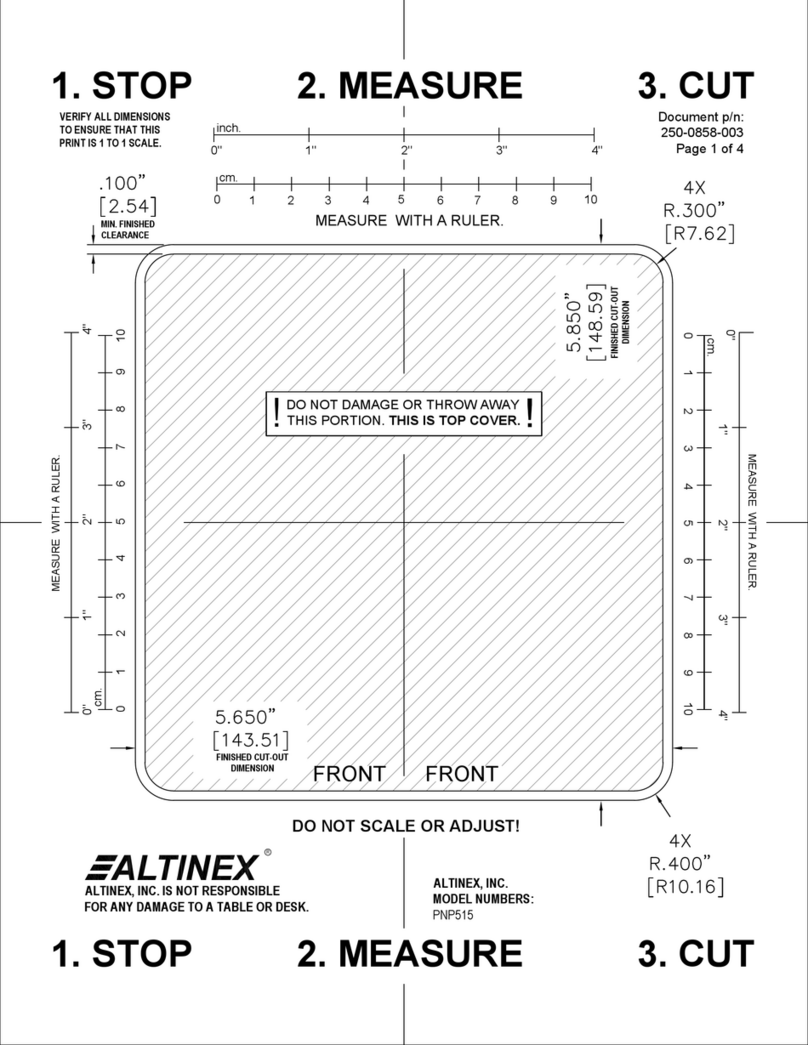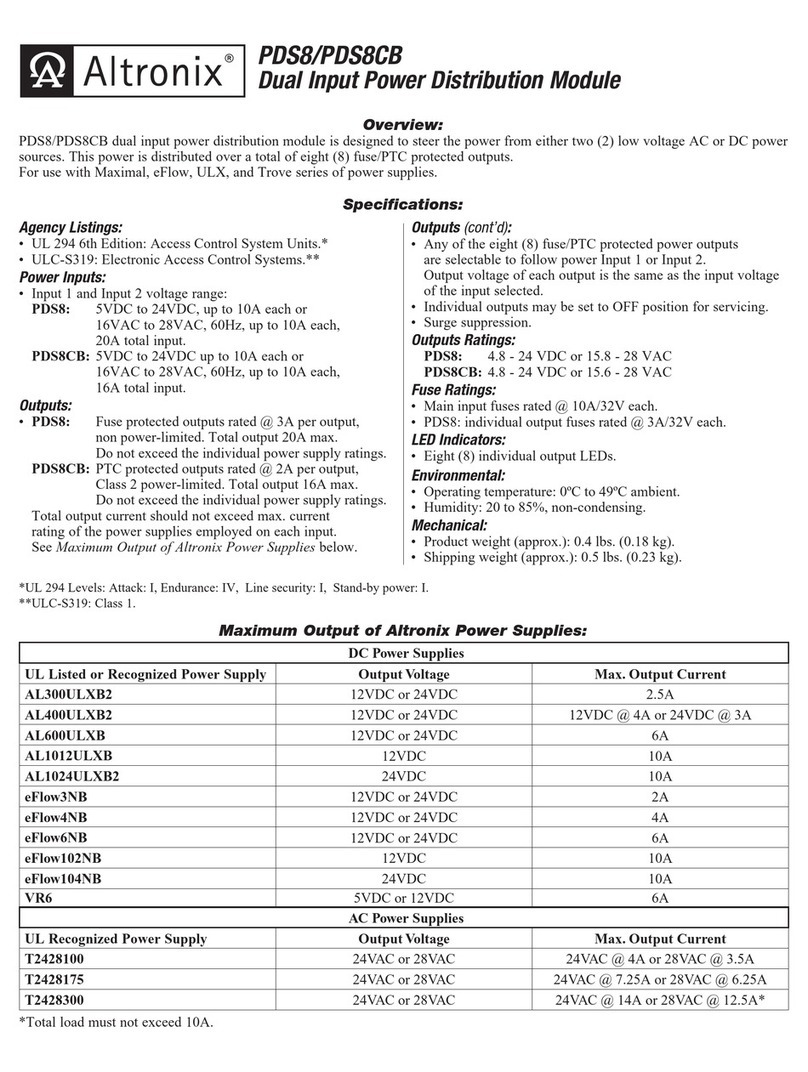D-fend SA300 User manual

User Manual
Compliance..........................................................2
Warranty information.........................................2
Introduction
D-fend™ overview .........................................3
Typical applications........................................3
What NOT to do with D-fend™......................3
“Use your ears”..............................................4
Product Description
Front LED legend............................................4
NL4 connectors..............................................4
Specifications......................................................5
Terms and Definitions ........................................6
USB Connection ..................................................9
Typical System Configurations
Subwoofers....................................................10
Full system.....................................................11
Tweeter only ..................................................12
Distributed 20-70-100 volt .............................13
Setup Wizard .......................................................14
Mounting Recommendation..............................17
Advanced Programming ....................................18
Dual sub .........................................................20
Full system.....................................................21
Tweeter protection ........................................25
Distributed systems.......................................26
Troubleshooting..................................................27
Technical Support ...............................................28
© 2013 Eminence Speaker LLC. All rights reserved. D-fend™ is a trademark of Intrinsic Audio Solutions, Inc., D.B.A SLS Audio.
Do not assume the SA300 is sufficiently programmed right out of the box without any additional
configuration via the set-up Wizard or Advance Programming window. The unit ships with default
settings intended for quality assurance testing purposes only.
stand alone unit
power handling:
4,000W @ 8Ω | 2,000W @ 4Ω | 1,250W @ 2Ω
SA300

2
D-fend™ SA300 User Manual
Compliance
Please note there is a shock hazard and there are no serviceable parts inside this device. D-fend is FCC Class A certified,
CE certified, and RoHs/WEEE compliant. Please read the manual before using this product.
Warranty Information
The Eminence/D-fend Technology warranty remains in effect for one year from the date of the first consumer purchase (in
the USA) with the original bill of sale. Without an original bill of sale, the manufacturing date will establish the beginning of
the warranty period.
Your warranty covers all defects in material and workmanship except: damage caused by accident, misuse, abuse, product
modification or neglect, damage incurred during shipment, claims based upon any misrepresentation by the seller, or any
Eminence/D-fend Technology product on which the date code/serial number has been defaced, modified or removed.
Eminence will pay all labor and material expenses for all repairs covered by this warranty. Please be sure to save the
original shipping cartons. A charge will be made if replacement cartons are requested. You are responsible for transporting
your product for repair or arranging for its transportation and for payment of any initial shipping charges. We will pay the
return shipping charges if repairs are covered by the warranty.
Eminence’s liability is limited to the repair or replacement, at our option, of any defective product and shall not include
incidental or consequential damage of any kind.
This warranty gives you specific legal rights. You may also have other rights which vary from state to state.
If your Eminence/D-fend Technology product ever needs service, contact us at
Eminence Speaker LLC
P. O. Box 360
838 Mulberry Pike
Eminence, KY 40019
502.845.5622 phone
502.845.5653 fax,
warranty@eminence.com (for warranty purposes only)
dfend@eminence.com (for general inquiries)
Or you may contact the distributor or dealer where you purchased the product. Please do not ship your product to the
Eminence factory without prior authorization.
Use the email address, warr[email protected] for warranty issues only. For all non-warranty issues, please contact
Eminence at dfend@eminence.com.

3
D-fend™ SA300 User Manual
Introduction
The patent pending D-fend technology utilized within your SA300 makes use of advanced, high-efficiency power conversion
techniques to provide an unprecedented level of protection for your loudspeaker system. Due to the architecture of the
D-fend technology, the SA300 is the first device within the industry to provide programmable, high-voltage, high current, full
range signal protection for large loudspeaker systems. In the past, protection circuits were employed only for use with high
frequency devices due to the limited power handling of the protection circuits. These devices attempted to protect the
high frequency driver by dissipating the undesired power into resistive elements or even light bulb components. Obviously,
these power dissipative passive techniques resulted in limited power handling characteristics, no user programmability,
limited response speed, no frequency selectivity, and life-cycle concerns.
D-fend overcomes these deficiencies and provides you with the first-ever full-range, programmable loudspeaker protection
network for use within a myriad of applications. This technology operates upon the principle of reducing the power
delivered to the load, your loudspeaker, while also reducing the net electrical current required from your amplifier. In other
words, the D-fend technology is a non-dissipative technique in that it does not dissipate the undesired power into heat or
light output; rather it reduces the amount of power that is requested from the amplifier through the use of high-efficiency
digital factoring.
Obviously, we believe D-fend is groundbreaking technology that opens a door for users such as yourself to experience
peace of mind concerning your loudspeaker investment. With the D-fend digital attenuator under complete microprocessor
control, you have at your fingertips a world of protective configurations – enjoy!
Typical Applications of D-fend
Broadband protection of a loudspeaker or loudspeaker system
By enabling the All Pass function, one can set the maximum average power level that the device will see. As with all D-fend
applications, the Attack and Release times can be adjusted to facilitate natural sounding speaker protection.
High frequency protection
RMS and Peak power can be limited to prevent thermal and mechanical failures of high frequency devices.
Low frequency protection
Woofers and subwoofers carry the burden of the most demanding loads in audio. By properly choosing peak limits, one
can maximize the performance of these devices by preventing over-excursion events and heating issues.
What NOT to do with D-fend
The D-fend SA300 unit was designed to minimize speaker failure due to accidental transients (dropped mics, feedback,
etc...) and simple over-powering. It was not designed to afford the safe use of a 2000W amplifier powering a 15W speaker.
The D-fend unit’s thermal shut-off will trigger if it encounters a scenario such as this.
Do not place the D-fend unit on the output of any tube amps (guitar or otherwise). The D-fend circuitry was designed for
solid state amplifiers.
Do not assume the SA300 is sufficiently programmed right out of the box without any additional configuration via the set-
up Wizard or Advance Programming window. The unit ships with default settings intended for quality assurance testing
purposes only.
D-fend was not designed to prevent damage in improperly designed speaker systems related to woofer/cabinet designs
(excursion), crossover frequencies, and improperly chosen transducers.

4
D-fend™ SA300 User Manual
Use Your Ears!
The D-fend SA300 is in the output signal chain. Monitor the quality of the sound as you make adjustments. If you have lost
significant overall level, low frequency, or high frequency information then further adjustments to the settings are needed.
Proper settings not only provide protection, but will result in a lower operating temperature (longer life) and less distortion
(cleaner sound) in cases where the speaker system limits would normally be exceeded.
Product Description
LED Legend A B C D E F G
NL4 Neutrik Input and Output Connections
H
A. HF PEAK / RMS - this LED indicator illuminates in the event that the user-defined high frequency peak or RMS voltage
thresholds have been matched or exceeded. A red light here signifies RMS voltages in the high frequency band have
triggered attenuation. A green light here signifies peak voltages in the high frequency band have triggered attenuation.
Note: It is possible for both colors to be illuminated simultaneously.
B. ALL PASS RMS - this LED indicator illuminates in the event that the user-defined RMS voltage threshold has been
matched or exceeded. A red light here signifies RMS voltages across the entire audio band have triggered attenuation.
A green light here signifies that an over-voltage scenario has been detected and the user is advised to lower the audio
input stimulus. Note: It is possible for both colors to be illuminated simultaneously.

5
D-fend™ SA300 User Manual
C. LF PEAK – this LED indicator illuminates in the event that the user-defined low frequency peak voltage thresholds
have been matched or exceeded. A red light here signifies peak voltages in the low frequency band have triggered
attenuation. A green light here in conjunction with a red fault light signifies that significant DC energy was detected
and the device will momentarily disconnect the loudspeaker to protect against long-term DC damage.
D. FAULT / COMM – this LED indicator illuminates red if the D-fend device senses a DC voltage, over current, or over
temperature fault situation. Any of these three faults will result in momentary loss of audio. DC faults will be indicated
by a red fault light AND a green LF peak light. Over temperature or over current faults will be indicated by a red fault
LED. In the event of an over current or over temperature event, it is advisable to reduce the audio level and/or check
the speaker impedance to ensure you are operating within the specified parameters of the SA300. A green light here
signals that D-fend is ready for communication and connected by USB.
E. USB – The SA300 is equipped with a mini-USB connection for programming and communication purposes.
F. POWER – this LED indicator illuminates yellow when D-fend is being supplied with adequate power from either the
audio line or external power supply.
G. 12 VOLT DC – D-fend is equipped with DC power connection in the event that desired protection threshold settings are
below the minimum audio signal power required to activate the D-fend protection device (see Specifications section
below) or in the event that it is undesired to use the audio signal as the power source.
H. NL4 Neutrik Input and Output Connections – Please note +2 and -2 pins on both connections are unprotected pass
through. The SA300 does NOT provide protection on pins 2 of the NL4 input/output circuit path.
Specifications
Maximum Power Specifications
The D-fend SA300 has maximum peak voltage and current ratings of 300 volts and 25 amps, respectively. Therefore,
maximum power specifications are impedance dependent. Below is a table listing the maximum input power D-fend is
capable of safely managing.
D-fend Maximum Power Specifications
1,250 W @ 2Ω 2,000 W @ 4Ω 3,000 W @ 6Ω 4,000 W @ 8Ω 2,000 W @ 16Ω
Minimum Power Requirements
The D-fend SA300 requires a minimum amount of audio signal power in order for the protection circuit to function properly.
The amount of power required to activate the D-fend protection circuit is dependent upon the source of the supplied
power as well as the impedance load of the connected system(s) that are to be protected. The minimum power required
can be greatly reduced with the use of an external power supply (sold separately) which may be advantageous for some
applications. Below is a chart illustrating the minimum power requirement of the D-fend SA300 if incorporating an external
power supply, or if using only the audio signal as the power source.
Minimum Continuous Audio Signal Power Required
Impedance (Ω) Using External Power Supply (W) Using Only the Audio Signal (W)
2 0.500 32.0
4 0.250 16.0
6 0.167 10.7
8 0.125 8.0
16 0.063 4.0

6
D-fend™ SA300 User Manual
Thermal Limits
D-fend incorporates built-in thermal protection circuitry which will temporarily disable the unit in the event that the
thermal limit has been reached or exceeded. Failure to mount the device in the recommended orientation will increase the
likelihood of reaching this limit (see Mounting Recommendation on page 17). Reaching the temperature threshold signifies
the SA300 is being subjected to extremes beyond what it is rated for, and/or that there is an issue with the protected
system or the system demands.
Weights and Dimensions
Weight Width Height Depth
SA300 Unit Only 2.4 lbs / 1.09 kg 5.94 in / 15.09 cm 2.38 in / 6.05 cm 6.75 in / 17.15 cm
SA300 in Retail Carton 3.1 lbs / 1.41 kg 8.0 in / 20.32 cm 3.0 in / 7.62 cm 7.0 in / 19.05 cm
Terms and Definitions
All Pass – the entire audible spectrum: low, mid and high frequencies.
Attack and Release Times
Attack time – Determines how fast the D-fend processing engages after the signal has exceeded the threshold.
Setting the attack time to a short value will result in a fast response to peaks and will result in more obvious changes
in the output signal as the output is clamped to the threshold level.
Release time – This is the amount of time after the signal has dropped below the threshold level before the signal
returns to its unprocessed form.
Attack
Phase
Input Level
Threshold
Output Level
Time
Level
-3
0
+3
+6
+9
Release
Phase
Connect – Press this button in the Advanced Programming GUI software to connect the D-fend SA300 to your computer
unless you are using the set-up wizard (The wizard automatically connects the SA300 to computer.)
Enable – select this button to activate processing for the desired frequency range
Enclosure Type
Multi-way – indicates a full range system utilizing one or more speakers to cover the audio spectrum.
Subwoofer – indicates you have a system that only produces up to the first three octaves of music (20Hz—160Hz)

7
D-fend™ SA300 User Manual
Fb –The frequency at which the tuned ports minimize the cone excursion. Below that frequency, the cone excursion
increases as the enclosure starts to behave as an open box without proper restoring force for the cone. For this reason,
many cabinet design programs such as Eminence Designer have the option for modeling high pass filters for subwoofer
applications to prevent over-excursion and the resulting damage to the woofer. D-fend technology can provide the same
woofer protection by limiting woofer excursion below this operating point.
F3 – The frequency where the low-end response crosses a line 3dB below the mid-band sensitivity. In the example below,
the F3 is 40Hz.
20 Hz 5030 40 100 200
dBSPL
85
90
95
100
-3 dB
HF – High Frequency, the spectral content reproduced by tweeters.
LF – Low Frequency, the spectral content reproduced by woofers and subwoofers.
Peak – the maximum signal level.
Power Handling – It is common for speaker and speaker systems manufacturers to specify power handling by three
terms: 1) continuous duty 2) music and 3) peak, with music being 2X continuous and peak being 4X continuous. If you are
unsure of your system’s ratings, please contact the cabinet manufacturer for this necessary information.
RMS – an abbreviation for Root Mean Square, which is the statistical measure of magnitude over time. Due to the
geometry of a pure sine wave, the RMS value is .707 * Peak. For random spectral content such as music, this mathematical
averaging is complex and best measured using proper test equipment.
RMSPeak
-1
0.5
0
0.5
1

8
D-fend™ SA300 User Manual
Slope – The angle at which a filter is applied, expressed in dB/Octave. Higher numbers represent steeper slopes and
provide greater protection at frequencies below the filter knee.
200 500300 400 1K 2K 5K
dBR
-6
-9
-12
-15
-3
0
3
Ratio vs. Frequency
6dB per octave
12dB per octave
Status Indicators
Sync – indicates that the D-fend has received the values from your programming screen.
Async – indicates that the values on your programming screen have not been loaded to the D-fend unit. Changing any
value in the programming screen will result in Async status until the values are sent to the D-fend SA300.
Offline – Your D-fend unit is not properly connected via USB to your computer.
System Impedance – Complex resistance expressed in ohms, it is the electrical impedance to current flow. One must
know the impedance of the device being protected in order to properly calculate associated voltages and current.
Threshold – In the world of signal processing, the threshold is the selected signal level where the desired action is
initiated. As with audio compressor/limiters, the SA300’s cue to process incoming signal is determined by the setting of
the threshold. The greater the signal magnitude rises above the threshold, the greater the amount the signal is processed.
If the signal level is below the threshold, then the processor is not engaged and the signal passes unchanged.

9
D-fend™ SA300 User Manual
Voltage/Watts Table
Power 25 50 75 100 150 200 250 300 400 500 600 700 800 900 1000 2000 3000 4000
NomZVVVVVVVVVVVVVVVVVV
2 Ω 7.1 10.0 12.2 14.1 17.3 20.0 22.4 24.5 28.3 31.6 34.6 37.4 40.0 42.4 44.7 63.2 77.5 89.4
4 Ω 10.0 14.1 17.3 20.0 24.5 28.3 31.6 34.6 40.0 44.7 49.0 52.9 56.6 60.0 63.2 89.4 109.5 126.5
6 Ω 12.2 17.3 21.2 24.5 30.0 34.6 38.7 42.4 49.0 54.8 60.0 64.8 69.3 73.5 77.5 109.5 134.2 154.9
8 Ω 14.1 20.0 24.5 28.3 34.6 40.0 44.7 49.0 56.6 63.2 69.3 74.8 80.0 84.9 89.4 126.5 154.9 178.9
16 Ω 20.0 28.3 34.6 40.0 49.0 56.6 63.2 69.3 80.0 89.4 98.0 105.8 113.1 120.0 126.5 178.9 219.1 253.0
Amperage/Watts Table
Power 25 50 75 100 150 200 250 300 400 500 600 700 800 900 1000 2000 3000 4000
NomZAAAAAAAAAAAAAAAAAA
2 Ω 3.5 5.0 6.1 7.1 8.7 10.0 11.2 12.2 14.1 15.8 17.3 18.7 20.0 21.2 22.4 31.6 38.7 44.7
4 Ω 2.5 3.5 4.3 5.0 6.1 7.1 7.9 8.7 10.0 11.2 12.2 13.2 14.1 15.0 15.8 22.4 27.4 31.6
6 Ω 2.0 2.9 3.5 4.1 5.0 5.8 6.5 7.1 8.2 9.1 10.0 10.8 11.5 12.2 12.9 18.3 22.4 25.8
8 Ω 1.8 2.5 3.1 3.5 4.3 5.0 5.6 6.1 7.1 7.9 8.7 9.4 10.0 10.6 11.2 15.8 19.4 22.4
16 Ω 1.3 1.8 2.2 2.5 3.1 3.5 4.0 4.3 5.0 5.6 6.1 6.6 7.1 7.5 7.9 11.2 13.7 15.8
,
, ,
USB Connection to D-fend
To connect the D-fend SA300 to your computer, simply connect the provided USB cable to an available USB port on your
computer, and connect the mini-USB end of the cable to the front of the D-fend SA300 unit.
Typical System Configurations
The power amplifier’s output is connected to the SA300’s input, and the output of the SA300 is then connected to the
speakers. The one exception to this is the case of 25-70 volt distributed sound system that uses voltage step-up/step-
down transformers and we will cover that recommended system connection last in this section. First, let’s start with
everybody’s favorite: Subs!
Subwoofers
Subwoofers can be one of hardest working and most often abused component of a PA system. Many times we ask the
subs to go lower, louder, and play longer than any other part of the system. Subs are often connected to the most powerful
amplifiers in the rack and then the amps are driven very hard. When a subwoofer does fail during a show, it is easy to
notice the reduced bass energy level. The system operator will often try to compensate for the lower bass energy by
pushing the remaining working subwoofer systems harder, thus putting them at higher risk of failure.
The SA300 will help you manage your subwoofer systems in terms of keeping them alive and playing show after show
no matter who is at the controls. Figure 2.1 below shows a typical subwoofer system setup consisting of two 18” subs,

10
D-fend™ SA300 User Manual
each cabinet being an 8 ohm load rated at 800 watts. Note the output of the amplifier used to drive the subs, in this case
a bridged mono amplifier rated at 2000 watts into a 4 ohm load, is connected to the input of the SA300. The output of the
SA300 is connected to the two subwoofer cabinets that are daisy chained (connected in parallel). The load presented to
the SA300 will be a 4 ohm load rated at 1600 watts and the power amp will also see a 4 ohm load most of the time. We
will cover the programming of the SA300 to protect this system in the Advanced Programming section on page 17.
We chose to show this subwoofer system setup with two subs to show what the final load would be on the SA300. The
connection would be the same if one subwoofer cabinet was used and the rating of the one cabinet would be the load
applied to the SA300. In fact, using parallel, series, or parallel-series connection schemes, you could run multiple sub
cabinets off of a single SA300 unit, but the total load seen by the SA300 and power run through the SA300 must fall within
the ratings/guidelines given in the Maximum / Minimum Power Specifications on page 5.
Full System
In this section we show how to connect a typical live music system that includes top-boxes and subs for front of house
sound and floor wedges for the musicians on stage; see Figure 2.2 for our connection diagram. We will assume the Front
of House (FOH) is run bi-amped and in mono. We will also assume there is just one monitor mix, even though we show
three floor wedges. Since there will be three very different speaker-level signals (subwoofer, top-box, and monitor mix), we
will need to use three SA300’s to fully protect the system.
In this example system, the subwoofer is just one 4 ohm, 1600 watt box so the SA300 will see a 4 ohm, 1600 watt load
connected to its output. The amplifier used for the subwoofer system, a bridged mono 2000 watts @ 4 ohm unit, will be
connected to the input of the SA300. Actual programming of the SA300 will be covered in the Advanced Programming
section on page 17.
The two top-boxes are daisy chained (connected parallel), and since each one is an 8 ohm, 500 watt box, the SA300 used

11
D-fend™ SA300 User Manual
to protect them will see a 4 ohm, 1000 watt load connected to its output. The amplifier used to power the top boxes, a
bridged mono 1600 @ 4 ohm unit, is connected to the SA300’s input. Actual programming of the SA300 will be covered in
the Advanced Programming section on page 17.
The three 8 ohm-200 watt floor wedges will present a 2.7 ohm-600 watt load to the output of the SA300 assigned to
protect them. The amplifier used to power them has one channel that is capable of 1000 watts into a 2 ohm load, so it will
be connected to the input of the SA300. Actual programming of the SA300 will be covered in the Advanced Programming
section on page 17.
Again the point can be made that any combination of parallel, series, or parallel-series connected speaker systems can be
used on the output of the SA300, but you must stay within the ratings/guidelines given in the Maximum / Minimum Power
Specifications on page 5.

12
D-fend™ SA300 User Manual
Tweeter Protection
In Figure 2.3, we have an example of a planar ribbon tweeter typically found in a high end studio monitor. Often these
tweeters are powered by their own dedicated amplifier as shown in our example. Here the output of the amplifier, a 300
watt per channel into 8 ohm unit, is connected to the input of the SA300. The tweeter is an 8 ohm 50 watt unit connected
to the output of the SA300. Actual programming of the SA300 will be covered in the Advanced Programming section on
page 17.
Notice there is an external power supply being used with the SA300 in this example. The use of an external power supply
(sold separately) will allow the user to protect the tweeter at a very low voltage level if needed (below the normal threshold
of basic D-fend operation). It gives extremely fast reaction times and provides the ultimate in sound quality. Typically the
SA300 will be powered by the audio signal, but there are situations where using external power will be best. Protecting a
$1,000 ribbon tweeter is one of those situations.
25-70-100 Volt Distributed Systems
Attention! The SA300 can not be used AFTER an audio transformer.
The SA300 can be used in 25 and 70 volt distributed systems that use either a transistorized high voltage, low output
impedance direct drive amplifier (without an internal step up transformer) or with a normal amplifier and an external step-
up transformer. If you are not sure if your amplifier has an internal transformer you should contact the manufacturer of
the amplifier, or you can call us and we will try to research it for you. If in doubt, do not connect the SA300. If you use the
SA300 after an audio transformer, system damage and damage to the SA300 can occur.
Most modern amplifiers designed to drive 25, 70, or even 100 volt systems do not use internal step-up transformers. In
this case, the SA300 will be connected to the output of the amplifier and the output of the SA300 will be connected to the
lines that drive the small step-down transformers at each speaker. Please see fig 2.4 for proper connection of the SA300 in
a 70 volt distributed system using a high voltage direct drive amplifier. Again, only connect the SA300 to the output of your
amp if you are 100% sure there are no internal output transformers.

13
D-fend™ SA300 User Manual
If you are using a normal PA type of amplifier that is designed to drive 4 or 8 ohm speaker systems and want to use it in a
distributed 70 volt system, you may need to use a step up transformer to get the high voltage/low current required. If you
do have to use a step up transformer, the SA300 will be connected between the amplifier and step-up transformer. Please
see fig. 2.5 to see the correct way to connect an SA300 in a high voltage distributed system.
Please refer to the Advanced Programming section for more information and guidelines to follow when using the SA300 to
protect a distributed sound system.

14
D-fend™ SA300 User Manual
Set-up Wizard
Step 1 – Connect the D-fend SA300 unit to your computer via the USB cable provided. After launching the D-fend
programming graphical user interface (GUI) you will first be prompted to accept the terms and conditions (figure 3). After
agreeing to the terms and conditions, click the “Start Program with Wizard” button. You should now be viewing the “D-fend
Wizard Settings” screen seen in Figure 3.1. Please see the “Terms and Definitions” section of the manual for explanation of
the terms used within the Wizard.
Figure 3 Figure 3.1
Step 2 – You are given the option of selecting “Subwoofer” or “Multi-way” in the Enclosure Type section. If you are
programming the D-fend SA300 for subwoofer protection only, then select “Subwoofer” and enter the rest of your
remaining variables and continue to step 3. If you are protecting a multi-way enclosure, select “Multi-Way”. You will then
see the screen in figure 3.2.
Figure 3.2
Once you have reached the window shown in figure 3.2, please complete the rest of the fields on the form. In the section
titled “Woofer Diameter”, select the size of the largest woofer in your enclosure.

15
D-fend™ SA300 User Manual
Step 3 – Once you have entered all of the required information into the Wizard, click the calculate button. The Wizard will
then give you the recommended settings for your D-fend SA300.
Please note: As a precautionary measure the Wizard has automatically reduced your settings to 1/4 of the power
rating you have entered into the Power Rating section. This has been done to give you a conservative number to
start with because loudspeaker manufacturers use different methods to achieve their published power handling figures,
and may not be indicative of actual long term usage thresholds. Also note this wizard is intended to set up the D-fend
unit for one speaker enclosure, not multiple enclosures wired in series or parallel. We recommend this as a starting value.
Please start at this reduced rating and work your way up to a level you feel comfortable with, and does not exceed the
manufacturer’s rating. Listen to the cabinet and make adjustments as needed.
Figure 3.3 shows an example of the complete Wizard form.
Step 4 – Once calculations have been made and you are satisfied with your settings, click the “Continue” button to move
on to the next phase of programming. When you click continue, you will see a window pop up explaining what the Wizard
is doing with your calculated settings (figure 3.4).
Figure 3.4 Figure 3.5
Click the “OK” button and you will be taken to the main D-fend programming form. The Wizard has loaded your settings
into the proper places within this form. Figure 3.5 demonstrates this. You will notice the Wizard has determined the
frequency slope, frequency cut-off, and attack and release times. The attack and release times you see on the screen are
the default settings. For more information about attack and release times, please see the “Terms and Definitions” section
of the manual.

16
D-fend™ SA300 User Manual
Step 5 – Now that you have the desired settings loaded into the main D-fend form, click the “Connect” button at the top of
the form.
A warning box will appear asking, “Overwrite current workspace settings?” When programming the D-fend unit using
the wizard, you will want to click “Cancel”. If you click “OK”, the program will overwrite the settings that the wizard has
determined for you with the settings already configured in the SA300, and you will lose your information. So for this type
of setup, you will need to click “Cancel”.
You will also notice a small window located at the top left of the form that says “ASYNC”. This indicates that the settings
on the D-fend SA300 unit do not match the settings in the D-fend form.
In order to load the new settings into the D-fend SA300, click the “Computer to D-fend” button (figure 3.6):
Figure 3.6
Once the “Computer to D-fend” button is clicked, you will receive another warning screen asking you if you wish to
continue. If not, click “Cancel”. If so, click “OK”.
Your D-fend SA300 is now loaded with the settings provided by the Wizard. You will see the screen in Figure 3.7 and will
see the message, “Coefficient readback passed” in the information window. Your D-fend unit is now ready to be used with
your audio system.
Figure 3.7
Remember, the settings that the Wizard has calculated are very conservative. The Wizard is intended to give
you a good starting point. You will most likely need to do some adjusting to the thresholds to get adequate output from
your enclosure. Once you have reached this step in the programming process and desire to increase the thresholds, we
recommend raising these thresholds very slowly. Take your time and get it right. Make sure you are comfortable with what
you are expecting the enclosure to produce yet remain protected.

17
D-fend™ SA300 User Manual
Mounting Recommendation
For maximum cooling potential, it is recommended to operate D-fend with the cooling fins positioned in a vertical
orientation as illustrated in the drawing below.
Failure to provide adequate exposure to ambient air may limit the performance or life expectancy of the device.
Advanced Programming
This section of the manual provides information on how to use and operate the Advanced Programming portion of the GUI
(graphical user interface) provided with your SA300 and give you some tips and advice on tweaking the settings. At the end
of this section we will go over the recommended starting settings for our four example systems that we have shown you
earlier in the manual, and the process you should use to best tweak the settings.
Some words to the wise before we dig In:
When configuring the SA300 to protect your speaker system, we encourage you to begin with ¼ of the rated power of the
load connected to the SA300. This is very conservative in many instances and it will be up to you to make the ultimate
decision on how much protection you want vs. how much output you need. The SA300 is a tool to help you protect your
system and allow you to run it very hard without fear of blowing something up if it is set correctly. The SA300 needs to be
configured so the system can be run at its limits and the SA300 does not have any sonic impact on the musicality of the
system. It will take some trial and error to find the limits. If you find you are continually hitting the set limits then there is a
possibility you have either set the limits too low, or you have simply reached the limits of your system.
Let’s dig in and get your system properly protected.
First, some background on the SA300’s internal workings will help you better understand the settings we need to enter
into the SA300. The Advanced Programming portion of the GUI provides direct access to all three internal signal flow
paths used by the SA300 during run-time operation: the high frequency path (HF), the all-pass path (AP), and the
low frequency path (LF). As the audio signal is received into the SA300 it is sampled and then the inbound waveform’s
spectrum is analyzed over these three paths. After filtration, the three signal paths provide you with different limiter blocks
available for configuration. Specifically, the HF path provides an RMS limiter and a peak limiter; the AP path provides an
RMS limiter block; and the LF path provides a peak limiter block. All of these limiter blocks make use of standard limiting
parameters: threshold, attack, and release.

18
D-fend™ SA300 User Manual
Please note: The software may not accept one of your entries exactly as entered, defaulting to the closest selection found
in the microprocessor firmware.
High Frequency path configuration
The first thing you will need to do is configure the HF’s high pass filter. This can be done within the Advanced
Programming section of the GUI under the panel labeled “High Frequency”, wherein you are provided via drop down boxes
the available cutoff frequencies and filter slopes that are available within the SA300. Use the HF frequency cutoff and
slope selections to enter the desired spectrum that you want to subject to the RMS and peak limiters contained within
the HF path. It is recommended to select a cutoff frequency at or below the crossover frequency utilized with the HF
driver present within your loudspeaker system. If you are not sure what this frequency is, you should contact the system’s
manufacturer. If you have to guess the crossover frequency it is recommended to just use the set-up Wizard.
Next you will need to configure the HF’s RMS limiter and peak limiter blocks, generally configured for protection of your
high frequency driver. Configuring the HF RMS limiter can be done through the HF signal panel labeled ‘RMS’. This panel
provides industry standard limiter parameters (1) threshold, (2) attack, and (3) release. As with any infinite-to-one limiter,
the threshold determines the voltage level wherein the limiter will engage operation. Attack time determines the time
required to slew the attenuator to the required level needed to hold the output voltage at the threshold. Similarly, the
release time is the time required to release the attenuator back to an unattenuated or less-attenuated state. You can
set these three parameters (threshold, attack, and release) to your desired application requirements through the use of
the HF ‘RMS’ limiter panel entry windows. The HF peak limiter can be configured in a similar fashion using the HF signal
panel labeled ‘Peak’, wherein you can set the peak wattage or voltage threshold, as well as the attack and release times
associated with the HF peak limiter. It is recommended to set the attack and release times within the HF peak limiter
somewhat fast, thereby allowing quick transient protection for your high frequency driver.
All Pass path Configuration
Next you will want to configure the All Pass path (AP). The AP path displayed within the Advanced Programming window
provides an RMS limiter block generally used as the overall RMS protective limiter for the entire loudspeaker system.
Configuring the AP RMS limiter can be done through the AP signal panel labeled ‘RMS’. This panel provides industry
standard limiter parameters (1) threshold, (2) attack, and (3) release. As with any infinite-to-one limiter, the threshold
determines the wattage or voltage level wherein the limiter will engage operation. You can set these three parameters
(threshold, attack, and release) to your desired application requirements through the use of the AP ‘RMS’ limiter panel entry
window. The SA300 GUI allows for threshold entry in watts or RMS volts, and attack & release times in milliseconds.
Low Pass path Configuration
The next step will be to configure the low frequency path (LF). The LF’s low pass filter can be configured under the panel
labeled “Low Frequency”, wherein you are provided with the available cutoff frequencies and filter slopes available within
the SA300. Use the LF frequency cutoff selection to enter the desired spectrum that you want to subject to the peak
limiter contained within the LF path. It is recommended to select a cutoff frequency at or above the region wherein
your woofer enters mechanical over-excursion (hard bottoming, topping, or suspension blapping). Determination of this
frequency may require further investigation into your particular loudspeaker, but knowledge of the box type, rated F3, and
tuning (Fb) will usually provide a starting point
The LF path provides a peak limiter block, generally configured to protect your woofer against over-excursion scenarios.
Configuring the LF peak limiter can be done through the LF signal panel labeled ‘Peak’. This panel provides industry
standard limiter parameters (1) threshold, (2) attack, and (3) release. As with any infinite-to-one limiter, the threshold
determines the wattage or voltage level wherein the limiter will engage operation. You can set these parameters to your
desired application requirements through the use of the LF ‘’Peak’ limiter panel entry windows. It is recommended to set
the attack and release times within the LF peak limiter somewhat fast, thereby allowing quick transient protection for your

19
D-fend™ SA300 User Manual
low frequency driver. Some trial and error will have to be used when determining the peak LF wattage or voltage. Always
start off very conservative and slowly increase the peak power threshold and listen for sounds of woofer distress then back
the threshold down till the woofer sounds like it is operating comfortably within its mechanical range.
General Information on the Advanced Programming GUI
Each of these signal paths (HF, AP, and LF) can be disabled if not required for your application. The “enable” check-boxes
within the High Frequency, All Pass, and Low Frequency panels allow you to disable the respective signal limiting stage.
This can be beneficial within applications with limited spectral content, such as a subwoofer.
The indicator “lights” within the Advanced Programming threshold GUI boxes have the following function:
1. When the stage is enabled and the PC is connected to D-fend, they will show green to indicate an active limiter
stage.
2. When any of the limiter stages trip while the PC is connected to the SA300, the corresponding stage will light red
on the GUI. In other words, the GUI indicators will track with the actual LED’s on the SA300 when tripped and the
PC is connected.
These indicator “lights” were added as another way to indicate trip (a threshold has been crossed) AND a method to
indicate an active/enabled stage. If the stage is disabled OR the connection to D-fend is lost, there will be no GUI indicators.
We have found it quite beneficial to have the computer connected to the SA300 during system set up so that we can
monitor the actions of the SA300 during musical testing; the lights on the SA300 may not be visible in some installations, so
the indicator lights in the Advanced Programming GUI can be quite a blessing.
The Advanced Programming GUI also provides entry panels for you to name the current settings and assign a revision
number to that particular setting. This can be accomplished through the ‘Name’ and ‘Rev’ fields that appear on the
D-fend’s Advanced Programming window. The setting name cannot exceed 16 characters, and the revision field cannot
exceed a two digit revision between 0-99. It is recommended to use the name and revision fields to provide a clear label
for your coefficients, which will in-turn be stored within the SA300 non-volatile flash memory.
Once you have entered the settings for the three D-fend processing paths, you may save these settings to your computer
hard drive via the ‘Save’ option under the ‘File’ menu. Keep in mind the name and revision fields will be stored within the
file and will be recalled when you execute the ‘Open’ option under the ‘File’ menu. Additionally, upon completing your
coefficients and setting configurations, you may send these settings to the SA300 using either the PC-to-D-fend icon, or by
selecting the ‘Send to D-fend’ option under the ‘Comm’ menu. Please note when you execute either of these commands,
the existing settings within your SA300 will be over written. Therefore, it is recommended to begin your work by first
downloading the current SA300 settings, then saving the settings prior to sending new settings to your SA300.

20
D-fend™ SA300 User Manual
Programming/Tweaking the Set-up Examples
Dual Sub Setup
In this example we are using a single SA300 to protect two subwoofer cabinets connected in parallel. To the SA300, it
looks like one load that is 4 ohms and can handle 1600 watts. When setting up the SA300 for the first time on a system it
is helpful to know the system’s F3 and Fb in order to get an idea of where you think the driver may experience excursion
problems. In our example, the F3 of the cabinet is 36 Hz and Fb is 32 Hz. This system is capable of producing very low
bass.
HF
You would begin by disabling the HF path since this is a subwoofer system.
AP
Since each box is rated at 800 watts and they are in parallel, the load will be rated at 1600 watts. We recommend
setting the AP RMS to one quarter of 1600, or 400 watts to begin with. If working in volts, this would be 40 v. Again,
the software may not accept one of your entries exactly as entered, defaulting to the closest selection found in the
microprocessor firmware.
LF
Since the system has a low F3 and Fb, you would begin with setting the LF filter frequency to 50 Hz and 2nd order
slope. Next you would set the LF peak to 800 watts (56.57 volts).
Send this setup to the SA300. Now play the system and listen to it. Drive it as hard as, or harder, than you normally
would with music you are familiar with. Listen for the limiting events and keep an eye on the indicator lights so the
SA300 can tell you what it is doing. If you feel the system can take more power and the limiting action is taking place
too soon, raise the AP RMS and/or the LF peak until you feel the system is playing as hard as it can and not tear itself
up. If you feel the woofers are reaching their mechanical limit before the SA300 engages, then you may need to back
Table of contents
Popular Power Distribution Unit manuals by other brands
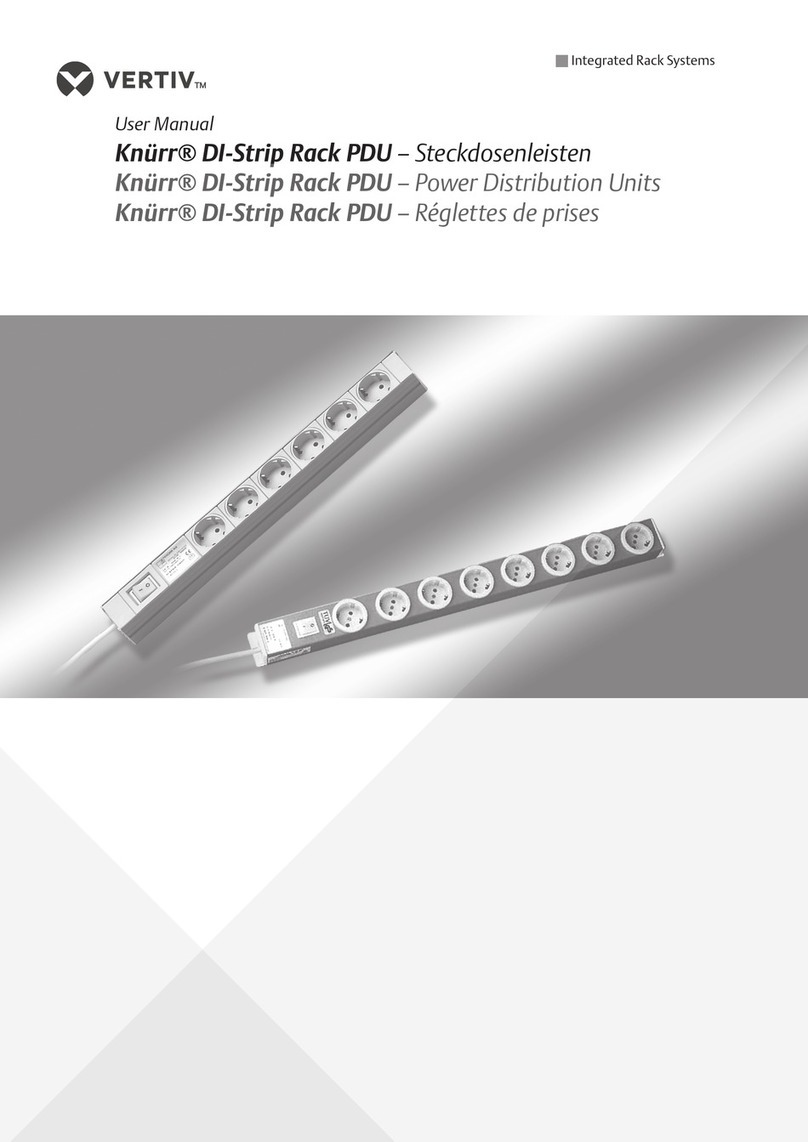
Vertiv
Vertiv Knürr DI-Strip Rack PDU user manual
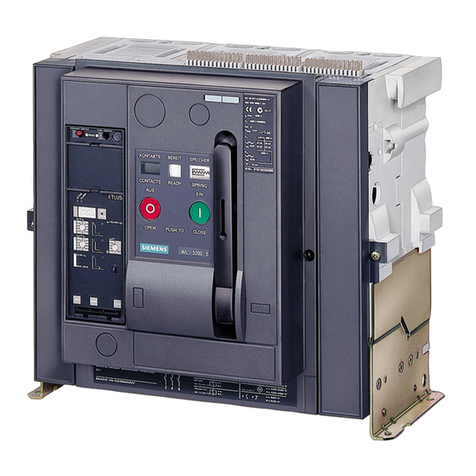
Siemens
Siemens WL Series instruction & installation guide
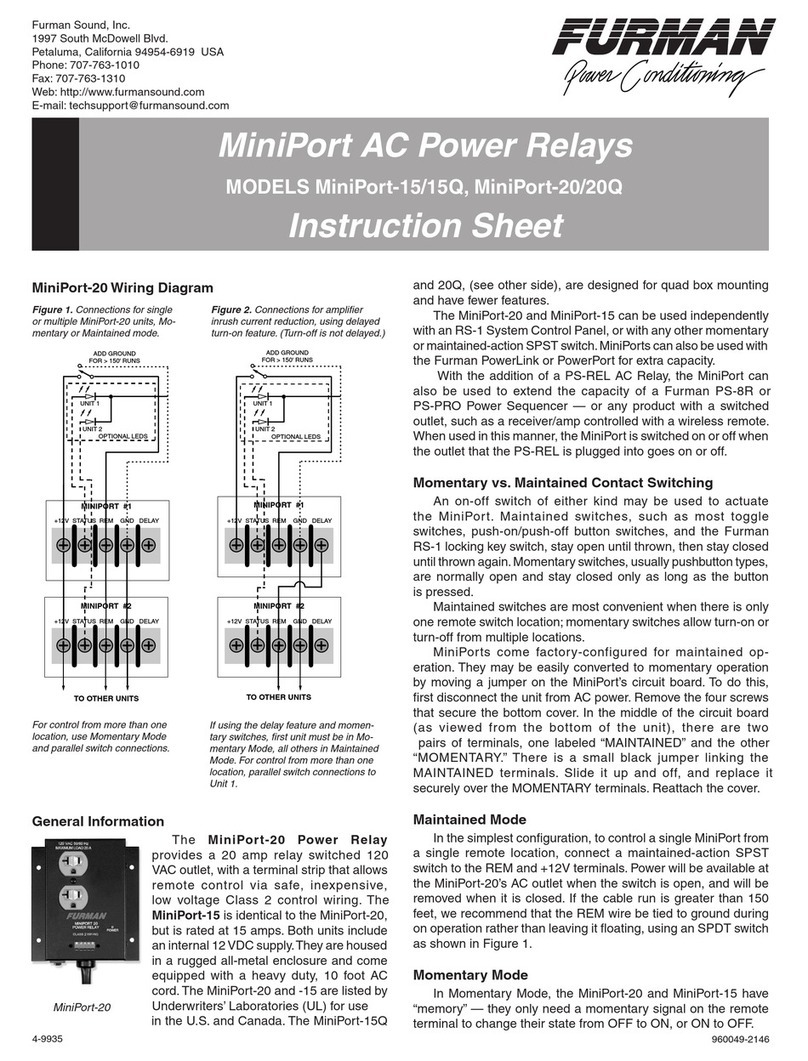
Furman
Furman MP15 instruction sheet
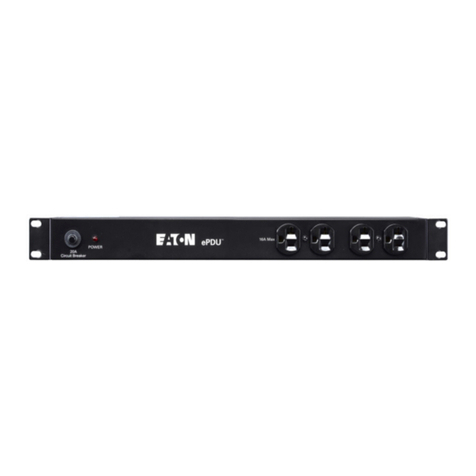
Eaton
Eaton EPBZ99 troubleshooting guide

EuroLite
EuroLite SB-1200B user manual

Middle Atlantic Products
Middle Atlantic Products Premium+ RackLink RLNK-P420 user manual
